The Mirror
EditorialAboutA+a Study CentreA+a ArchiveShopClose Menu
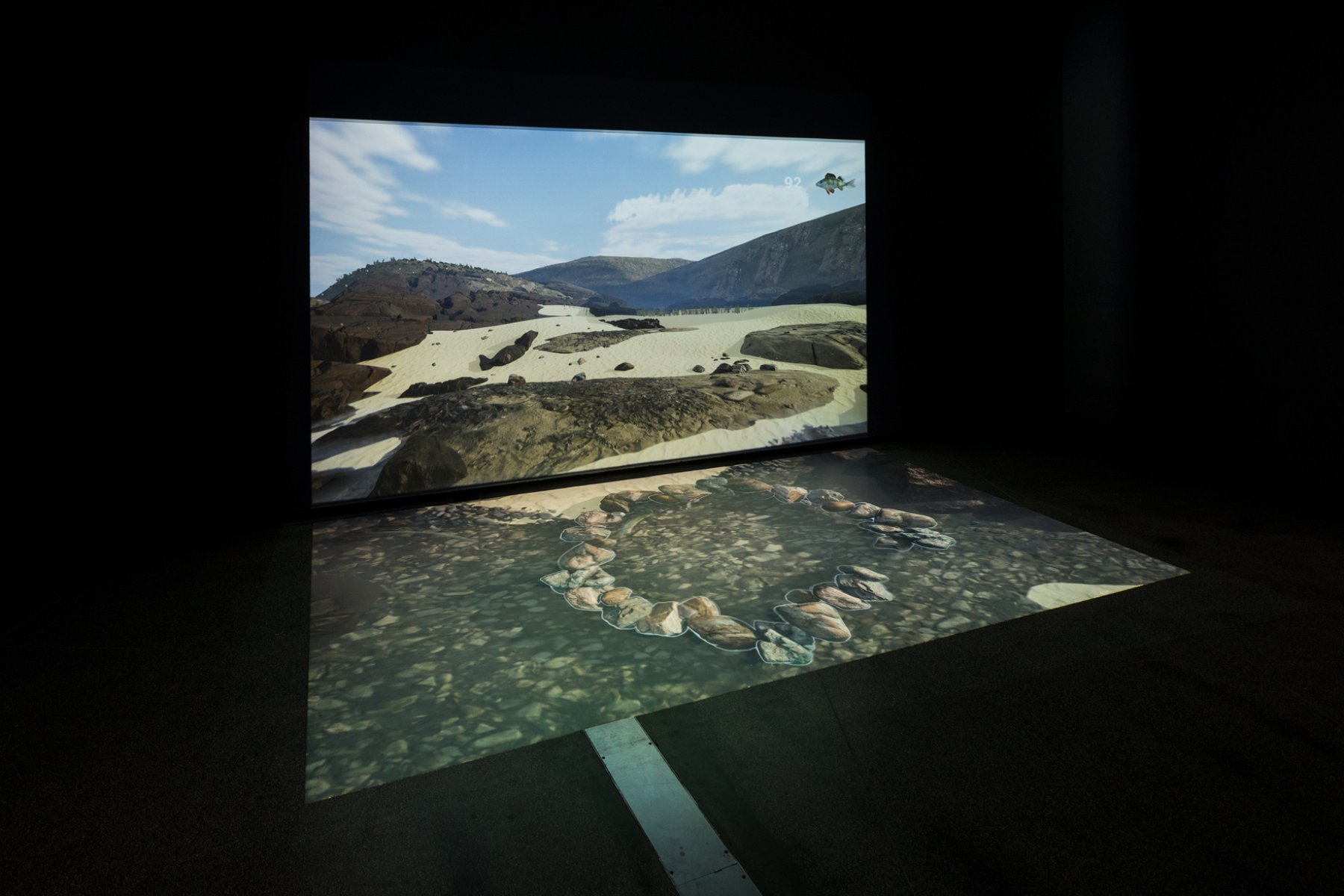
Waves flow. Across multiple frequencies and in varying ways, through absorption, transmission, reflection, or refraction. Waves, more often than not, reside beyond the scope of vision. Still, they carry memory and meaning and have a profound influence on the body, materiality, place, and space. In essence, waves both visible and invisible, guide a transfer of energy from one place to the next; within, beyond and between what can be seen. In the momentum of ocean waves, there is a moment held between the rise and fall of two waves, which may conjure both silence and solace, but also uncertainty. Will the wave that follows roll gently over, or will it swell and thump down hard? Will the body resist its momentum or welcome it?
Positive, negative
present, missing
floating, bound1
The exhibition Between Waves (2023) embraces the tension held and released by the tide, while simultaneously drawing to the fore, the energy fields, flows and forces at play in the day-to-day that influence self, relationships, and experiences of the world. The curatorial framework enfolds concepts related to waves of light, time and vision—and the idea of shining a light on the times as expressed by the Wurundjeri Woi Wurrung word Yalingwa. This word also locates Between Waves within a lineage of Indigenous-led commission-based projects that have been presented as part of the Yalingwa Visual Arts Initiative; a program supported by the Victorian Government in partnership with the Australian Centre for Contemporary Art (ACCA) and TarraWarra Museum of Art.
...In a region that has historically, and often still is, curatorially overlooked, the Yalingwa Visual Arts Initiative asserts that First Nations creative and cultural practice has been thriving throughout the Southeast since time immemorial and continues to do so. In response, the Yalingwa program provides a critical platform to celebrate the incredible breadth and national significance of contemporary art practice by First Nations artists connected to and/or based in Southeast Australia. Through a biennial-style series of First Nations identified curatorial positions, commission-based exhibition outcomes, and artist fellowships that recognise established artist’s significant contributions to creative and cultural practice in Victoria, Yalingwa celebrates and is underpinned by a history of presence rather than absence.
As the curator of the Yalingwa initiative’s third iteration at ACCA, it was important for me to consider and reflect on the exhibitions that had come before; on who and what forms of contemporary art practice had previously been featured, and the curatorial frameworks that had been explored. The inaugural Yalingwa exhibition A Lightness of Spirit is the Measure of Happiness (2018) was curated by Hannah Presley at ACCA, and the second, WILIAM BIIK (2021) was curated by Stacie Piper at TarraWarra Museum of Art. Presley’s exhibition brought together a range of contemporary art practices by First Nations artists in the Southeast and from across the country, an approach that emphasised the national significance and connection between creative and cultural practice beyond state borders. Following this first iteration, Piper’s exhibition opened-up an important curatorial dialogue between historical collections and contemporary art practice, while also carving out a crucial space for First Nations artists working in regional Victoria.
My curatorial approach was also informed by broader historical oversights and assumptions about Aboriginal art and artists in the context of the Southeast. I derived this knowledge from my doctorate, a curatorial practice-led research project that investigated the representation and presentation of Aboriginal art in exhibitions of Australian contemporary art, which at the time was being finalised and moving toward conferral. Further, as a palawa/pallawah woman and curator, born in lutruwita/trouwerner and now calling Wurundjeri Country in Naarm home, my own cultural positionality was considered, prompting the intention to curate an exhibition that expanded what is understood as the Southeast.
This third iteration of the Yalingwa exhibition series evolved in conversation with artists, about the ideas that yalingwa conveys—light, time and vision and the idea of shining a light on our times—in relation to the artists lived and felt experiences. While grounded in Victoria, the exhibition also engages contemporary art practices by First Nations artists working and connected to lutruwita/trouwerner (Tasmania), Tartanya (Adelaide), and Southern NSW. In response the participating artists—Maree Clarke, Dean Cross, Brad Darkson, Matthew Harris, James Howard, Hayley Millar Baker, Jazz Money, Mandy Quadrio, Cassie Sullivan, and this mob—developed reflective and site-responsive projects that explore and experiment with the intersection of material and immaterial realms of knowledge and knowing. What manifested is Between Waves, an exhibition that explores various visible and invisible energy fields and flows set in motion by these ideas.
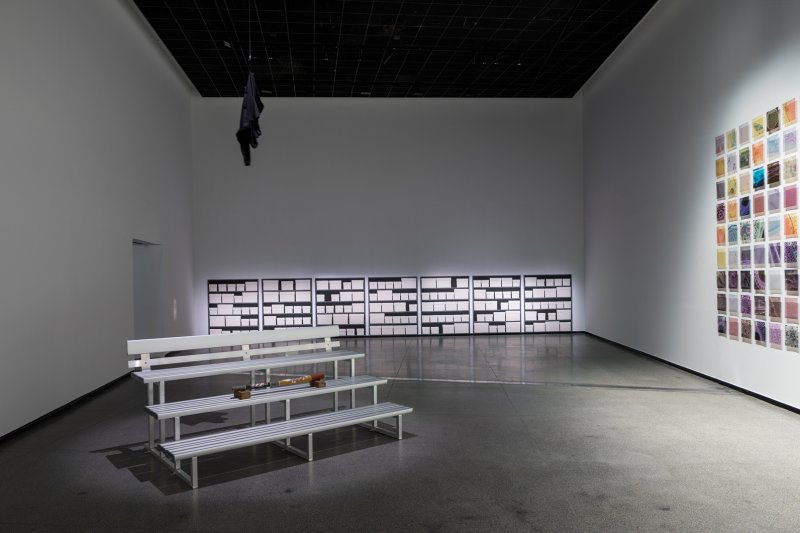
Between Waves unfolds throughout ACCA’s four large gallery spaces, intentionally approached with minimal curatorial intervention. In contrast to the glistening lights and shiny silver surfaces in the foyer, the exhibition was filled with ambient light that produces a shadow-as-threshold at its entry point. Entering the main gallery space the viewer is greeted by James Howard’s levitating sound sculpture. Subterranean frequencies gives voice to the unheard and unnoticed goings-on within the network of traffic and personnel tunnels that extend deep beneath the gallery floor. The asynchronous soundscape interweaves moments of intensity with breaths of silence to emphasise how sound elicits emotion, despite not having a physical form itself. In doing so, Howard conveys the intersection between tangible and intangible realms of knowledge and experience.
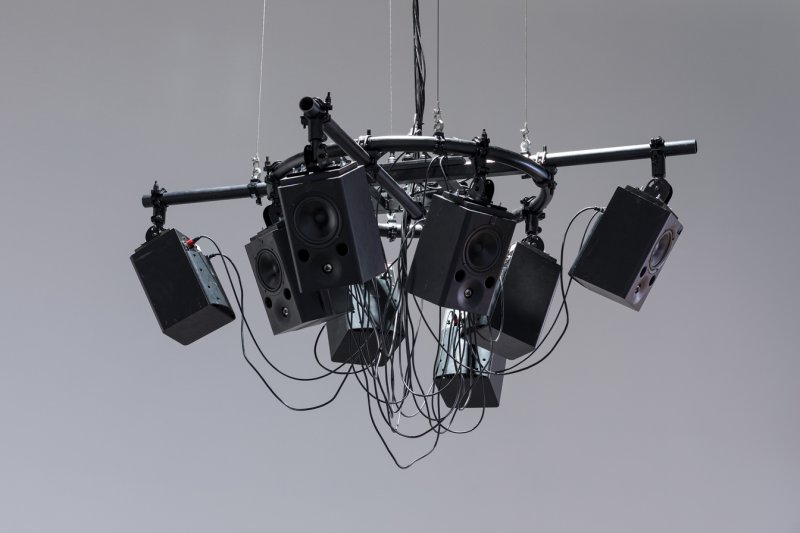
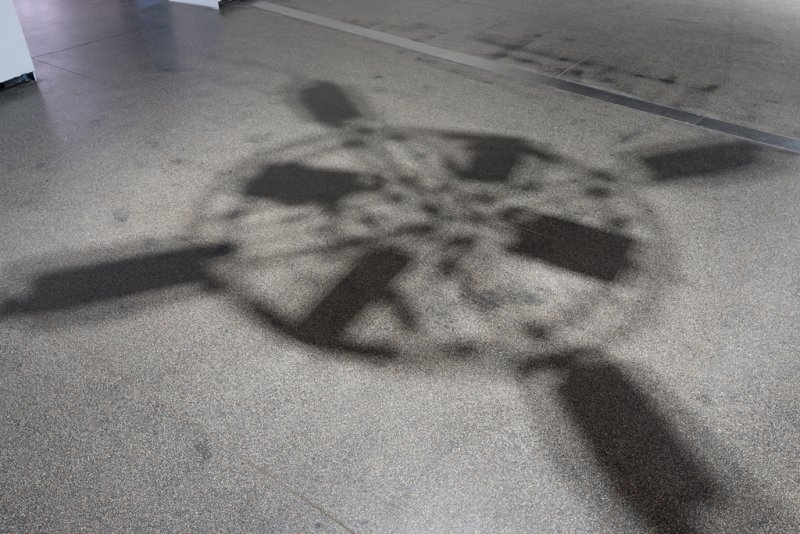
Following this, Maree Clarke’s new site-responsive commission now you see me seeing the invisible 1 expanded across the majority of the gallery’s largest wall to reveal the internal realm of activity occurring at a microscopic level within river reeds. This materiality is significant in relation to place. The site of ACCA, now home to an urban landscape, was once host to a vast ecosystem of wetlands, filled with river reeds. In the context of Clarke’s creative and cultural practice, river reeds are a material that she has come to know intimately through collection-based and practice-led research.2 The hundreds of multi-coloured microscopic river reed images, printed on acetate and presented by Clarke as an interconnected network en masse, emphasise that although the ancient river reeds can no longer be seen on this site, they remain deep within the sedimentary layers beneath the surface.3
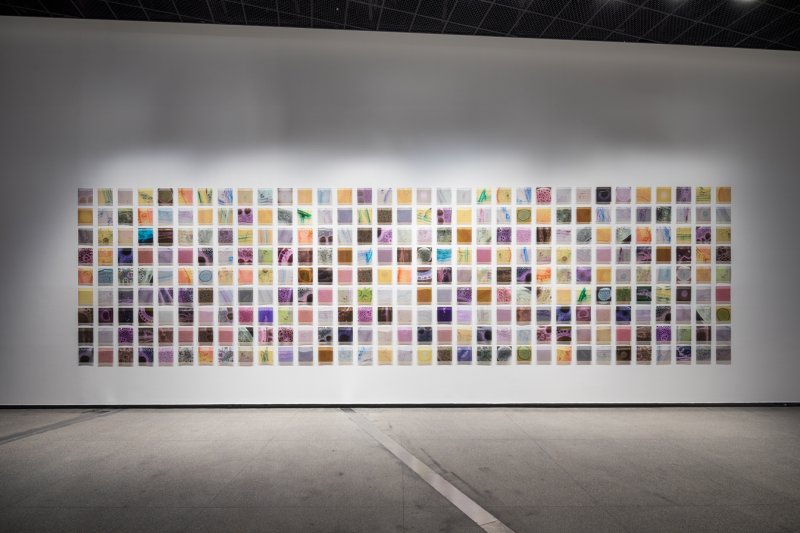
The encounter with Dean Cross’s On who goes to the Gallows follows on from Clarke’s microscopic network. The sculptural self-portrait features several objects of deep personal significance to the artist. These objects rest at the centre of a set of decontextualised aluminium bleachers, a typical presence at sporting, schooling, and/or community events. Looming above is Cross’s black hoodie, hanging from a large ‘S hook’ that in alignment with the work’s title, conjures notions of the hanged man, a symbol often relaying a junction in life, and/or signalling potential higher learning. The restraint in the selection and arrangement of objects in the heart of the main gallery space is potent here, particularly in the context of a First Nations dedicated group-format exhibition.4
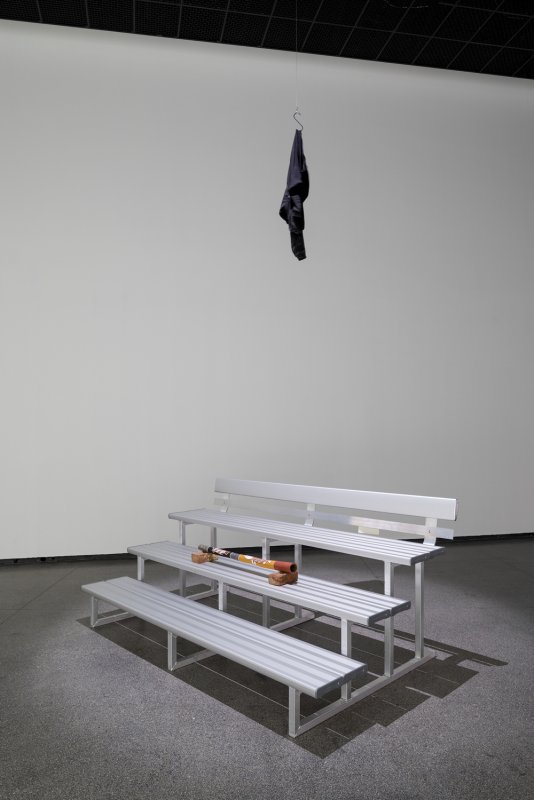
Consigned to oblivion by Matthew Harris lines the far back double-height gallery wall. The series of ochre and charcoal paintings depict rows of archival boxes, the contents of which are unknown. Collectively, they are representative of a standard museum storage facility. Consigned to oblivion grounds the exhibition experience and confronts the dark and sinister history that connects all museums and collections that for years have been shrouded in secrecy. Harris’s paintings materialised in response to a personal experience of a macabre exhibition on ‘human evolution’ within a renowned international institution, which presented an Aboriginal ancestor’s skull as a centrepiece. Through his delectably layered painterly reflections, Harris highlights that despite an ongoing repatriation inquiry, tens of thousands of Aboriginal ancestral remains continue to be held hostage by private and public collections throughout the country and the world.
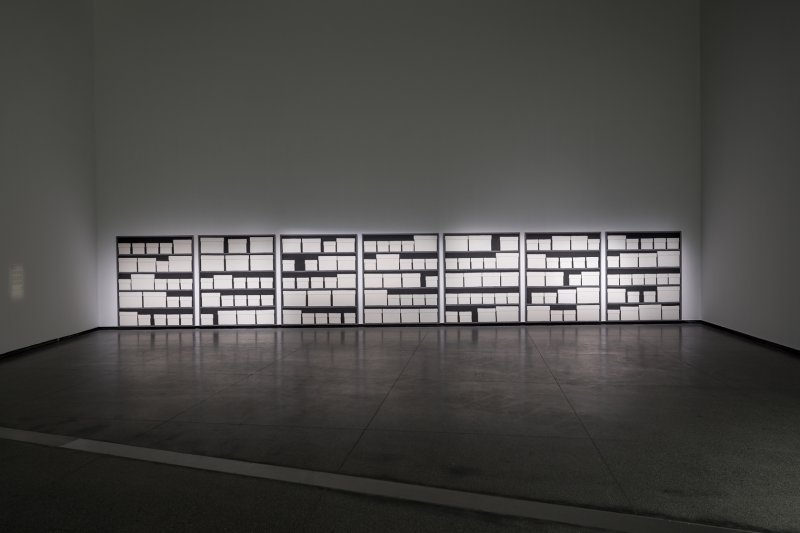
In the adjoining gallery space, Hayley Millar Baker’s silent single-channel video Entr’acte is projected at a scale large-than-life to fill the entirety of the far back wall within a dark and narrow hall-like viewing room. Cloaked by thick black theatre curtains, a durational performance unfolds that centres a female protagonist presented in portrait view, her gaze more-often-than-not meeting that of the viewer. Over eleven minutes and twenty seconds, Entr’acte holds the moment between an action and a reaction, prolonging the space in-between. Entr’acte is at once autobiographical and social commentary, a container of suppressed emotion and empowering resistance. By harnessing the strength, power and focus required to navigate these moments with restraint, Millar Baker confronts audiences with an invitation to look and think inward, beneath the surface and beyond oneself.

The ethereal soundscape tied to Jazz Money’s infinite iterative piece circulates inside and outside of Entr’acte’s purpose-built container, leading back into the light. A momentary poem materialises and dissolves in an instant across the three visual portals that Jazz Money’s infinite iterative piece opens-up. An ever-evolving horizon line emerges that presents a range of land, city, and sea scapes encountered on Money’s recent travels throughout the country and the world. Overlaid with a ‘lost line’5 of text derived from previous writing projects that unfold randomly across three adjoining projection screens, infinite iterative piece generates a space for contemplative resistance. What emerges is a moment of pause amidst the onslaught of light, data, and noise that is forced upon human experience; to breathe and just be.
Cassie Sullivan’s wayi (to hear) is arranged in a gentle ‘hug-like’ formation directly opposite Money’s infinite iterative piece. Sullivan’s series of seven monotype prints each dance across a suite of large sheets of frosted acrylic; the translucency of which conjures the mist that gathers and disperses across Country in lutruwita/trouwerner. The same swathe of tarlatan fabric features in each print, after having been twisted, pushed, and pulled in rhythm with the artists body, across merlukedee and nuenonne Country.6 The knowledge accumulated and now held within the delicate fibres of each imprint, conjures notions of body memory and blood memory that is passed between generations and revealed over time through experience. Suspended and responsive to movement, wayi (to hear) creates a network of transgenerational connection and communication across time, place, and space.
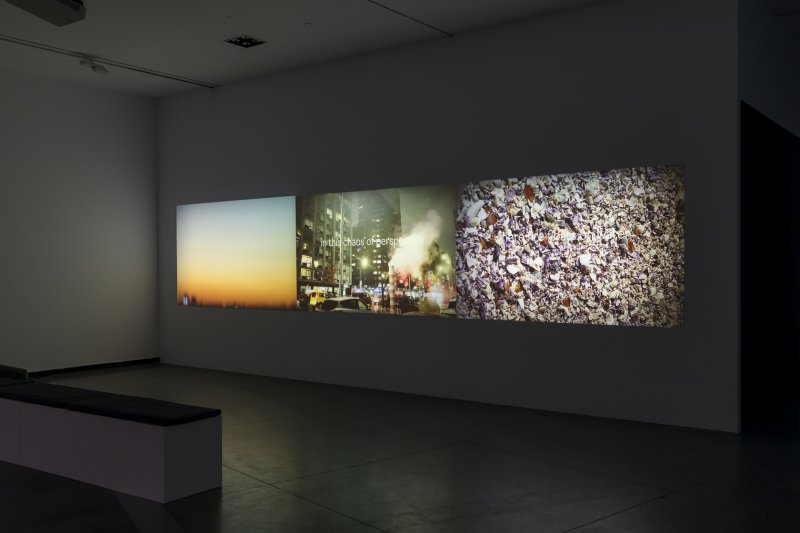
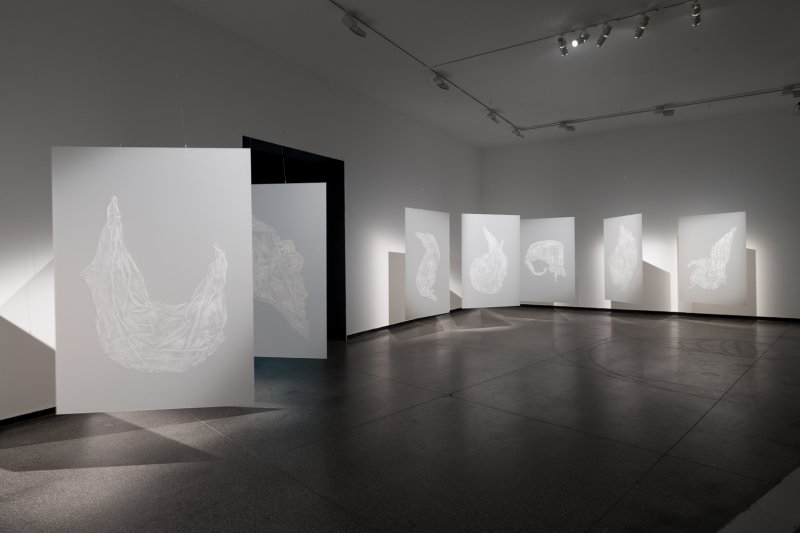
Brad Darkson’s waiting for kakirra materialises from within the darkness in the next gallery space. Presented across two projection screens across the floor and wall, the animated video geographically maps a significant site on Kaurna Country, Kangkarratinga (also Congeratinga), meaning the place where the river meets the ocean.7 Accompanied by a site-specific soundscape and videography, the animation is activated by presence in the space, setting-in-motion the construction of an ancient Kaurna fish trap; its original physical form at Kangkarratinga now in pieces, having been disrupted by recent “development”. As each rock is brought back together in their intended formation, waiting for kakirra conveys human and non-human ecologies as interconnected and working together. In doing so, Darkson highlights the significance and complexity of First Nations aquaculture, alongside a critique around ideas of “progress”. It seems that only now Western science is starting to catch-up with Indigenous knowledges.
Ambient light returns to fill the final physical gallery space that is host to a collective of three amorphous soft sculptures collectively titled Not Gone!. Suspended and set in a soft and subtle rotation motion, each form has been brought into being through Mandy Quadrio’s meticulous process of moulding and manipulating a steel wire mesh that interacts with the light to reflect the entire colour spectrum, while simultaneously casting a guard of shadows that move in and out of focus. The stretched, wound, and layered lengths of levitating and entangled wiry forms stretch from the floor to the ceiling and are reminiscent of smoke signals connecting the earth and the sky, or giant kelp reaching up from the depths towards the light-filled waves at the ocean’s surface. By manipulating this industrial material, Quadrio speaks back to attempted acts of erasure and mistold and obscured histories, reclaiming space and resounding a clear message, we are not gone.

Expanding beyond the physical experience of the gallery, Black Wattle Volume II by this mob unfolds in the digital realm. The interactive digital zine highlights both the individual and collaborative creative and cultural practice of Moorina Bonini, Kate ten Buuren, Maya Hodge, Jenna Lee and Jenna Rain Warwick. Through a considered process of deep listening and collective making, this mob weave conversations, experiences and memories that map connections and disconnections within the self, with each other, and the world, across time, place, and space. The integration and interconnection of the artists new multidisciplinary works presented within the Black Wattle Volume II, generates an exploratory and contemplative platform for listening and yarning, for connecting to share knowledge, and for rest. As Bonini explains, ‘the digital space becomes the interface between ourselves; a space where we can speak from’.8
Through a range of contemporary artforms including video, installation, poetry, projection, photography, painting, sculpture, sound, printmaking, and a digital zine, Between Waves ruminates on the interrelationship between life, materiality, people and place, and the urgent need to find balance. Through an artist-led embrace of internal and external worlds, of presence and absence, weight and weightlessness, the known and unknown, the exhibition stages a call for relational accountability and ethical responsibility. The ten ambitious new commissions that feature prompt reflections on life shifts and cycles, and centre notions of remembering, rehabilitation, regeneration, and reclamation. The participating artists, traverse sensory and cyclical rhythms of light and sound, thinking and feeling, listening, and seeing, interwoven with ideas of material memory. Together, they have brought into being an exhibition that illuminates interconnected shapeshifting ecologies within, beyond and between what can be seen. By embracing the push and pull dynamics that flow beneath the surface, the exhibition locates individual experience not at the centre of the world, but as an inherent part of its fabric.
‘Between the light and the dark, in the in-between places and spaces that no one wants to venture, truth seemingly lingers; rippling inward and outward, above and below the surface.’9
With the support NETS Victoria and Visions of Australia, Between Waves will tour nationally from 2024-2026.
1. Cassie Sullivan, Artist Statement, 2023.
2. Maree has explained that traditionally, river reed necklaces were made by BoonWurrung people and gifted as a sign of friendship or for safe passage across Country. Maree Clarke in conversation with author, 12th October 2022.
3. The microscopic images that feature in now you see me seeing the invisible 1 by Maree Clarke have also been adapted into an animated projection now you see me seeing the invisible 2; presented off-site at Federation Square this element of the work expanded the exhibition beyond the gallery walls.
4. I understand this resistance as speaking back to the expectation often enforced on First Nations artists and curators to perform identity, to educate about culture and recite and/or repeatedly relive trauma, in the context of Australian contemporary art.
5. Jazz Money, Artist Statement, 2023.
6. merlukedee Country and nuenonne Country are located in the Southeast of lutruwita/trouwerner.
7. Kangkarratinga or Congeratinga is a Kaurna word that means, where the river meets the ocean. Brad Darkson in conversation with author, 29 June 2023.
8. Moorina Bonini (this mob), Artist Statement, 2023.
9. Jessica Clark in Australian Centre for Contemporary Art, Between Waves publication, 2023.
Author/s: Jessica Clark
Jessica Clark. 2023. “As Above So Below: Reflections On Between Waves.” Art and Australia 58, no.2 https://artandaustralia.com/58_2/p175/as-above-so-below-
Art + Australia Editor-in-Chief: Su Baker Contact: info@artandaustralia.com Receive news from Art + Australia Art + Australia was established in 1963 by Sam Ure-Smith and in 2015 was donated to the Victorian College of the Arts at the University of Melbourne by then publisher and editor Eleonora Triguboff as a gift of the ARTAND Foundation. Art + Australia acknowledges the generous support of the Dr Harold Schenberg Bequest and the Centre of Visual Art, University of Melbourne. @Copyright 2022 Victorian College of the Arts The views expressed in Art + Australia are those of the contributing authors and not necessarily those of the editors or publisher. Art + Australia respects your privacy. Read our Privacy Statement. Art + Australia acknowledges that we live and work on the unceded lands of the people of the Kulin nations who have been and remain traditional owners of this land for tens of thousands of years, and acknowledge and pay our respects to their Elders past, present, and emerging. Art + Australia ISSN 1837-2422
Publisher: Victorian College of the Arts
University of Melbourne
Editor at Large: Edward Colless
Managing Editor: Jeremy Eaton
Art + Australia Study Centre Editor: Suzie Fraser
Digital Archive Researcher: Chloe Ho
Business adviser: Debra Allanson
Design Editors: Karen Ann Donnachie and Andy Simionato (Design adviser. John Warwicker)
University of Melbourne ALL RIGHTS RESERVED
